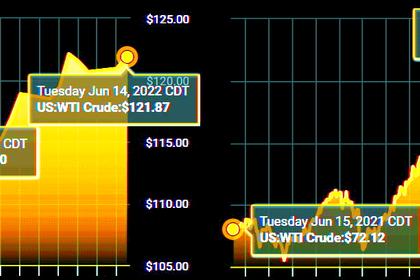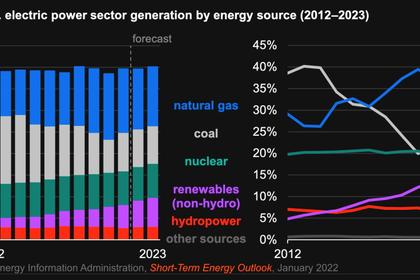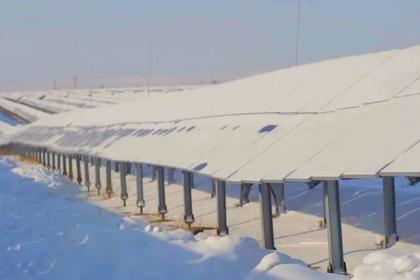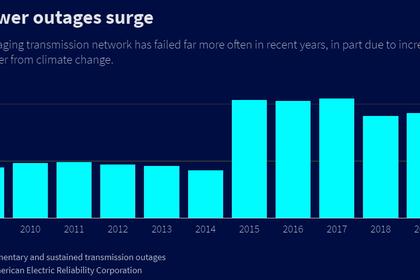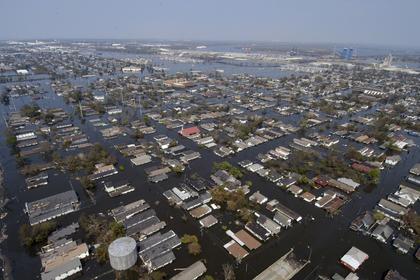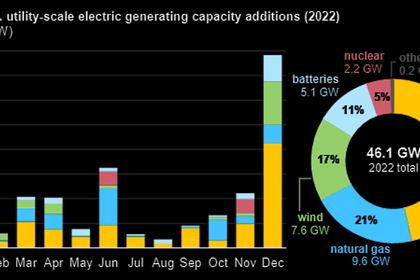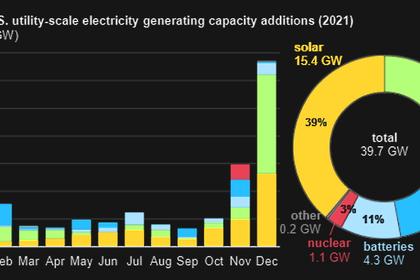
U.S. INTERMITTENT WIND
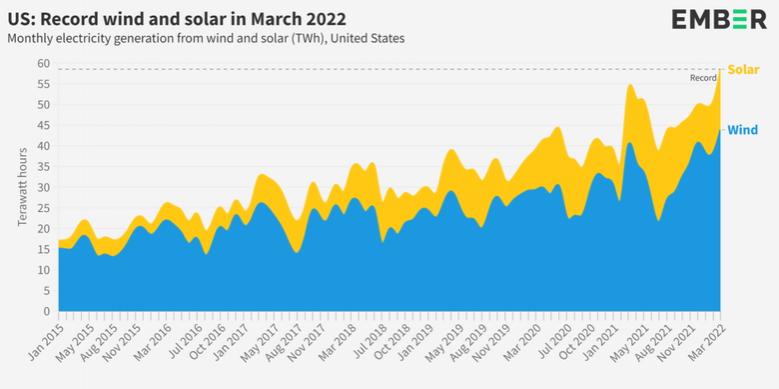
By ED REID Vice President, Marketing (Retired) / Executive Director (Retired) / President (Retired) Columbia Gas Distribution Companies / American Gas Cooling Center / Fire to Ice, Inc.
ENERGYCENTRAL - Jun 14, 2022 - Wind is intermittent. Therefore, wind generation is intermittent. Wind is unreliably available around the clock. Wind conditions vary geographically and seasonally. Therefore, wind generation potential varies geographically and seasonally. Wind generation has been implemented initially in the best locations for wind generation potential. However, expansion of wind generation would require installations in less than ideal locations.
US Energy Information Administration uses a capacity factor of 40% for new onshore wind generation. The International Energy Agency uses a capacity factor of 50% for offshore wind generation. Virtually all wind generation in the US and globally is redundant capacity, in that it cannot replace dispatchable conventional generation in a reliable grid, though it can displace the output of that conventional generation when wind generation operates.
Wind farms are typically proposed and reported based on the rating plate capacity of the wind generators. However, since the wind turbine capacity factors are in the 40-50% range, their annual potential output is typically half, or less, of the annual potential output of a conventional generator of the same rating plate capacity.
Wind generation must be supplied with full capacity backup to replace the wind generator output when the wind is not blowing, or is blowing at too high a velocity for the turbines to operate. This backup capacity is currently provided by the conventional generation fleet.
Wind generation capacity cannot be permitted to increase beyond the capacity of the conventional generation fleet if the grid is to remain reliable. This situation could result from an increase in wind generation or from a decrease in conventional generation capacity, or both.
The full cost of wind generation includes the capital, operating and maintenance costs of the wind farm plus the capital and operating costs of the conventional backup generation required when the wind generation is inoperable. The wind generation industry typically ignores the real cost of conventional backup, so that it can claim that wind generation is cheaper than conventional generation.
As conventional generation is retired, either because of age and condition or because of environmental regulation or Executive Order, its capacity must be replaced by storage capable of storing the rating plate output of the conventional generators for the maximum period of time wind generation might be unavailable, plus additional wind generating capacity sufficient to recharge the storage in the shortest period of time between wind interruptions. In this case, the full cost of wind generation includes the capital, operating and maintenance costs of the wind farm plus the capital, operating and maintenance costs of the storage and the extra wind generation capacity required to recharge storage.
Clearly, wind generation is not cheaper than conventional generation when its full costs are considered. Wind generation increases total generation investment in the short term, since it is redundant capacity. It also increases grid investment in the longer term, since it requires both storage capacity to backup the wind generation and additional wind generation capacity to recharge storage. The undepreciated investment in conventional generation retired by environmental regulation or Executive Order also remains as a grid investment, further increasing the cost of the wind generation plus storage which replaced it.
The expected life of wind turbines is 20-25 years. This compares to the 40-year depreciation period typical for conventional generation, increasing the annual ownership costs of the wind farm.
Earlier:
